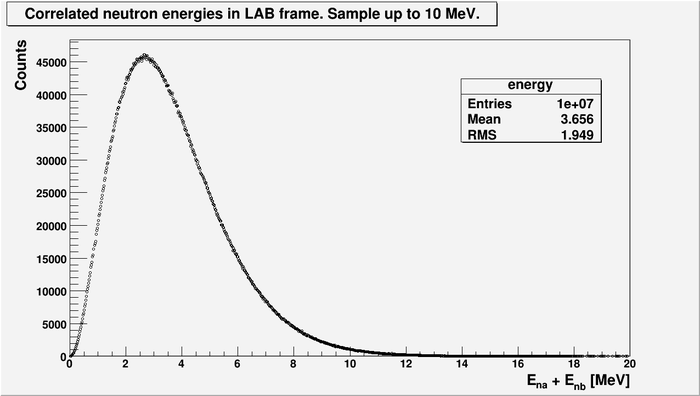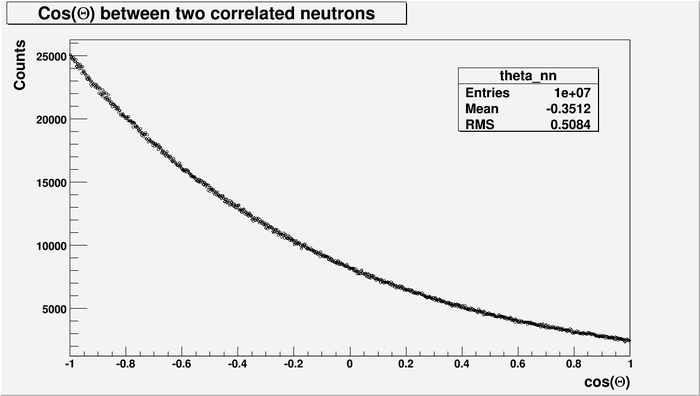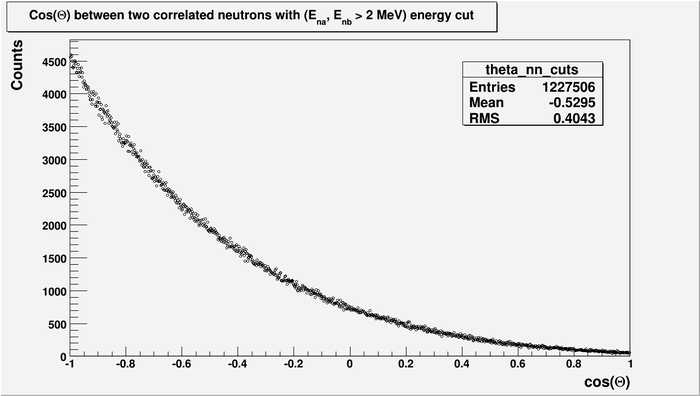Difference between revisions of "Cos(Theta) between two correlated neutrons. Unpolarized case."
Jump to navigation
Jump to search
| Line 12: | Line 12: | ||
| − | Even for the case above (without energy cut) the asymmetry between neutrons emitted anti-parallel and parallel is large and about | + | Even for the case above (without energy cut) the asymmetry between neutrons emitted anti-parallel and parallel is large and about 9. |
Revision as of 18:00, 10 June 2011
Below is the energy spectrum of two correlated neutrons in LAB frame.
- 10 million events total
- Sampled up to 10 MeV.
Below is between two correlated neutrons. Integrated over all energy spectrum without any energy cut.
Even for the case above (without energy cut) the asymmetry between neutrons emitted anti-parallel and parallel is large and about 9.
But let's do the energy cut.
The calculated asymmetry from the last plot is:
here:
- are all events with angle between two neutrons is
- are all events with angle between two neutrons is
That angles correspond to 90 cm long detector located about 2 m away from target. That is good for time of flight technique.
The yields are:
Looks good, but we need big statistics!


